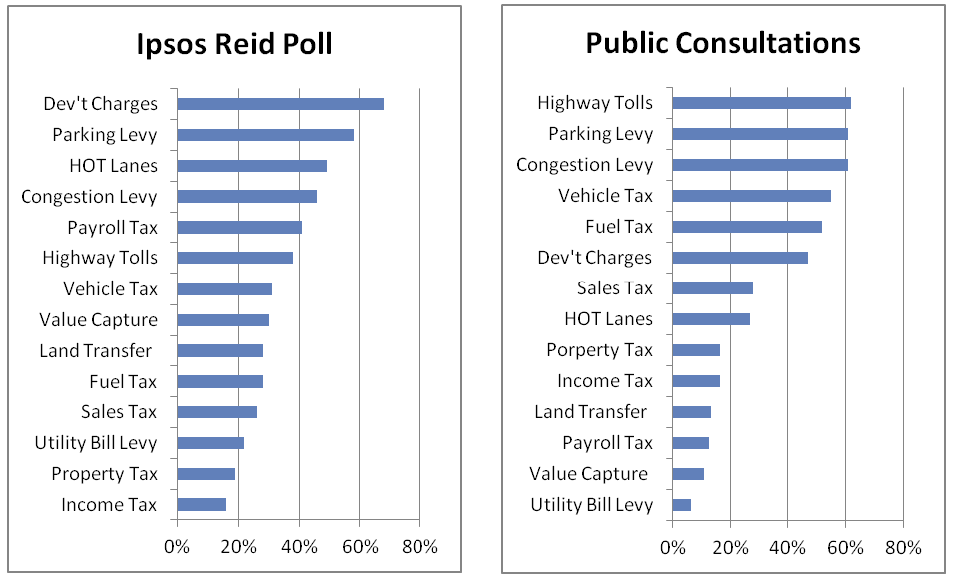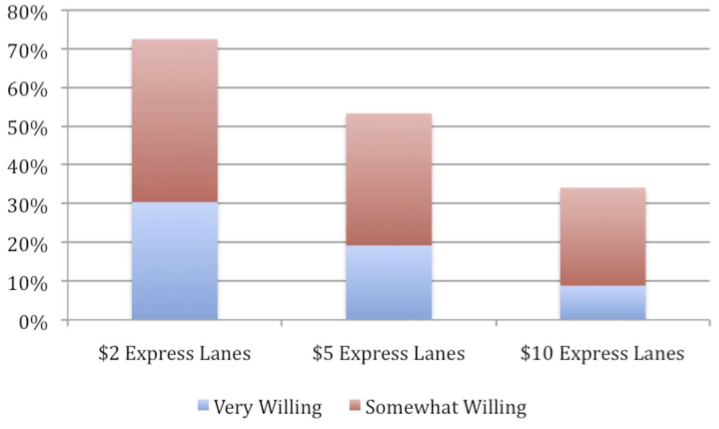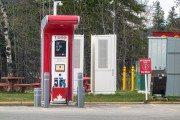This month's provincial budget saw the introduction of Ontario’s first (and modest) revenue tool to fund transit: high-occupancy toll (HOT) lanes. While carpooling drivers can use the high-occupancy vehicle (HOV) lanes to bypass congestion for free, turning them into HOT lanes allows single-occupancy vehicles to access them for a fee.
With the provincial budget currently being debated, now is a good time to examine how HOT lanes work and what impact they have on congestion, as well as commuters.
Q: What are the benefits of HOT lanes?
In California, which shares Toronto’s congested highway problems, a paid express lane on a major highway (Route 91) averages 100 kilometres per hour during peak periods, compared to 25 kilometres per hour for regular lanes. Similar benefits have been found on other tolled highways.
In addition to helping to ease congestion immediately, HOT lanes are a crucial first step to generate revenue to fund the Big Move, the regional transit plan for the Greater Toronto and Hamilton Area (GTHA).
Q: What impact will HOT lanes have on carpoolers?
Drivers of single-occupancy vehicles will pay to use HOT lanes in Ontario, while carpooling drivers can access them for free. The purpose of high-occupancy vehicle lanes is to encourage carpooling, so their conversion to HOT lanes must not result in congestion that will deter carpoolers.

In other jurisdictions, the cost of using the HOT lanes is adjusted according to traffic flow: the more congested the highway, the higher the fee. This maintains the flow of traffic and keeps the HOT lanes free of congestion — which is their selling point.
On California’s Route 91, the toll to access the express lanes change based on the time of day. Prices rise to US$9.75 during peak periods, when there is significant congestion, versus only $1.30 during regular periods. Vehicles with three or more passengers travel for free at any time except in the weekday afternoon peak, when they receive a 50 per cent discount on the toll. During peak periods, the express lanes can carry twice as many vehicles per hour at three to four times the speed of regular lanes.
California also has created separate express lanes for both paid single-occupancy vehicles and carpoolers. Ontario could begin with an all-in-one HOT lane and later convert to a two-lane approach, based on its popularity.
The end goal of transportation policy should be to change drivers’ behaviour, encouraging the shift to other modes of transport, and not just to raise funds. Charging tolls for express lanes may help with this, but ultimately the province needs to roll out a next phase of revenue tools — including a fuel tax and parking levies — to help generate the revenue necessary to fund the Big Move and influence driver behaviour.
Q: Are paid lanes fair to lower-income drivers?
Lower-income commuters have the most to gain from improved public transit and reduced auto dependency. Many of them rely exclusively on public transit, or are forced (because of limited transit options) to own a car at an average cost of over $10,000 per year, which takes up a disproportionate share of their household budgets.
Paid express lanes can be implemented in a way that is fair to lower-income commuters. Evaluations of Route 91 in California have shown that lower-income drivers do use the express lanes, and that they are as likely to approve of the lanes as drivers with higher incomes. The state government is also exploring strategies to redistribute revenues from tolls, such as distributing rebates or transferring revenues to transit and carpooling.
The delays caused by congestion can often result in lost hourly wages, late fees for day care, and longer hours away from home — all of which are serious challenges for working Ontarians and could be avoided with properly deployed express options.
Q: How are HOT lanes different than road tolls?
- HOT lanes are HOV lanes for carpoolers that can also be used by drivers of paying, single-occupancy vehicles.
- Ordinary paid express lanes charge a toll to all drivers regardless of how many people are in the vehicle. This is not currently the plan for the GTHA’s highways, but a toll lane could be added if HOT lanes become too congested.
- In the Toronto region, Highway 407 is an entirely tolled highway. In contrast, an express lane is just one lane on an existing highway, such as the 400-series highways. The revenue collected by HOT lanes could be used by the province for transit expansion in the case of the provincially owned 400-series highways, rather than going to a private company, as is the case with Highway 407.
Q: Where else is this happening?
Along with Route 91 in California, the Interstate 15 in San Diego charges single-occupant vehicles to use express lanes. The tolls are varied dynamically to ensure that traffic flows freely in the express lanes, and half of the revenues are used to support transit service in the corridor.
Minnesota has implemented HOT lanes on Interstate 394 and Interstate 35W. The charge for single-occupant vehicles to use the lane varies depending on congestion — the maximum fee is $8, with an average peak period fee varying between $1 and $4. The net revenue from the tolls is transferred to transit service.
The San Francisco Bay area in California is planning a network of HOT lanes that will collect funds to be directed to transit, and state-operated bridges in the Bay area also have one-way tolls with a portion of the revenue going towards transit. Los Angeles County has approved a plan to convert existing HOV lanes to HOT lanes. The express toll revenues will be used to improve transit or the carpool lanes along the corridor where the tolls were collected.
Other express or HOT lanes exist in Colorado, Florida, Georgia, Minnesota, Texas and Utah. Similar projects are being proposed in Virginia, South Carolina, North Carolina, Michigan, Maryland and the Lincoln Tunnel between New York and New Jersey.
Q: What is public opinion of HOT lanes?
HOT lanes have received modest to high support from the general public and the business community, likely because they are optional for drivers. The City of Toronto’s public consultation report shows strong support for HOT lanes in a public opinion poll, and moderate support based on in-person consultations (see figure below). As a result, the report recommends that HOT lanes be implemented after the first wave of Big Move projects is substantially complete.

Figure 1: Revenue options most often selected for transit in Toronto. Source: City of Toronto, Metrolinx Transportation Growth Funding.
Alternatively, based on consultation with its members, the Toronto Board of Trade, proposed HOT lanes as one of four revenue tools to fund the expansion of rapid transit in the GTHA.
Last year, Pembina commissioned a poll of drivers in the Greater Toronto Area conducted by Environics and found strong support for HOT lanes. More than 70 per cent of drivers would be willing to pay C$2 to use an express lane and bypass traffic, and 54 per cent would be willing to pay $5. With a $10 fee, the level of interest falls to just under 35 per cent — a level that would still result in a significant number of vehicles using the lanes.

Figure 2: "How willing are you to pay for access to express lanes?" Survey of Greater Toronto Area drivers in Pembina Institute, Driver’s Choice.
Q: How much money will HOT lanes raise?
The revenue generated will depend on the number and kilometres of highways that are tolled. The Toronto Board of Trade estimates that converting existing HOV lanes to HOT lanes would generate between $25 million and $45 million. The addition of new HOT lanes could increase this total, but HOT lanes are not the best option to raise funds for transit expansion.
HOT lanes are a means of easing congestion in the immediate term, and also an “ambassador” tool for the future rollout of additional revenue options that have greater capacity to fund the Big Move. The tolls also provide an opportunity for the provincial government to establish an actual fund for exclusive dedication to transit.
Follow Cherise on Twitter @CheriseBurda.





